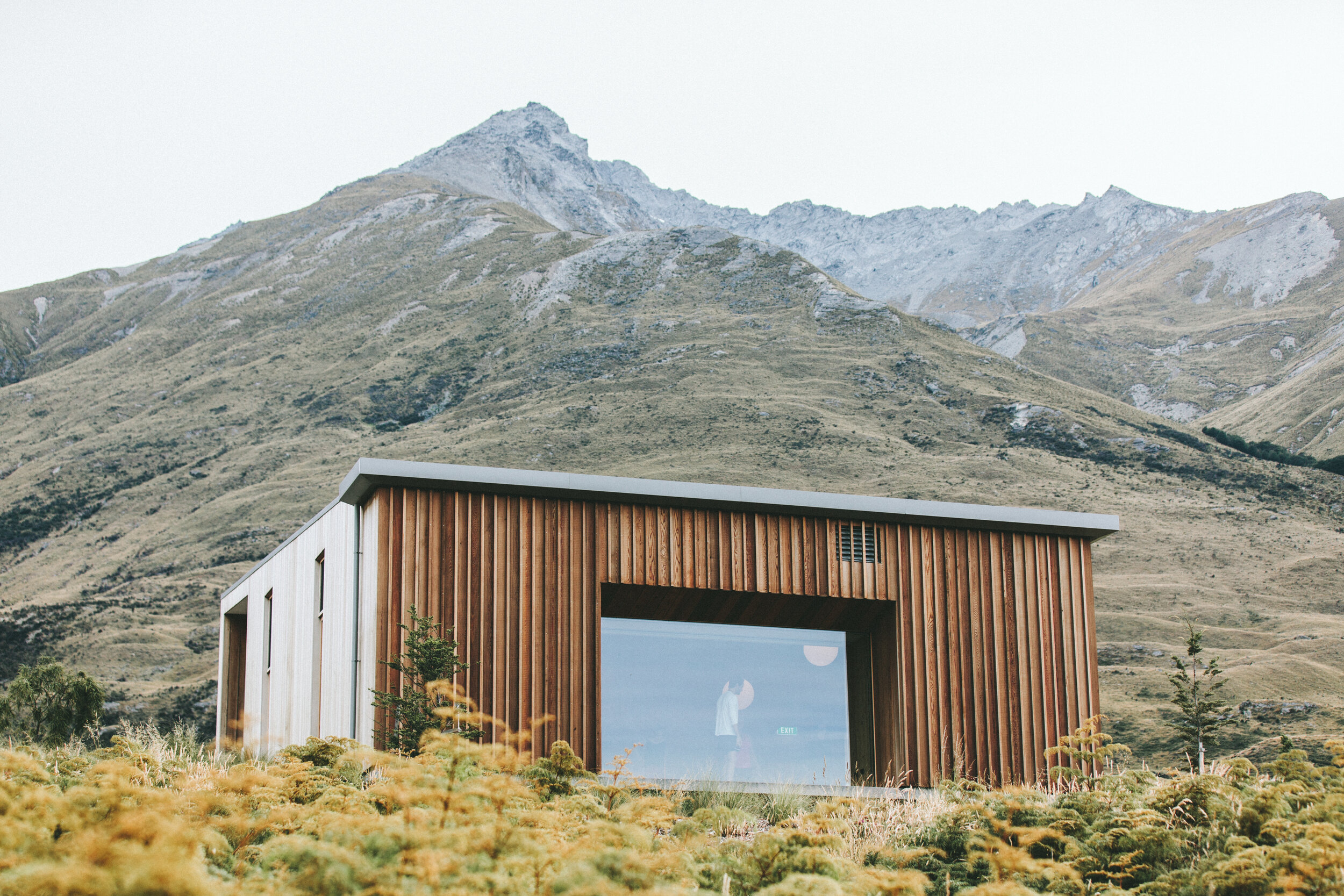Our History
A charter member of Post 5, Victor Hungerford, attended the Paris Caucus in March 1919, the meetings at which the American Legion was formed. Victor had been ordered to attend and was put on the convention committee in the US after the troops had returned from “Over There”. John Carruthers was chosen to be the acting commander of Post 5 while waiting on the charter from national and became the first official commander on August 7, 1919. Post 5 kept its charter rolls open until November 11, 1919, ending up with 413 members. The first couple of years’ meetings were held at the Soldiers and Sailors Club at 18 E. Bijou St. On its first anniversary, Post 5 was presented with the US Flag that Colorado’s National Guard Battery C from Colorado Springs flew while the unit was in France during the Great War.
By their fourth year, Post 5 decided they needed their own building. After a couple of hot meetings, the membership voted to build a place like the War Huts they saw in England. Construction started in October 1923, and the “Hut” opened its doors two months later. In 1927, the Post 5 Hut got expanded, and then again in 1955. Many people might think an American Legion building is just floors, walls, and ceilings, but, in truth, these buildings help veterans feel at home. Starting early on, the members of Post 5 wanted to show they would carry on the memories of the fallen in WWI. Colorado Springs pledged to place their names on the door frames of City Council, but that never came to be. So, to help Gold Star families, Post 5 organized the effort to plant trees at Boulder Park. They also halted the effort to change the city auditorium into a Memorial Hall, reasoning that so many different acts are highlighted that might not properly honor fallen veterans. In 1968, Post 5 led the charge to build the Veterans Memorial (not to be called a War Memorial) in Memorial Park. Post 5 also paid for and continues to maintain the flagpole at the Memorial.
Post 5 began advocating for a strong national defense by working to get Camp Carson, Ent Air Force Base, Peterson Air Force Base, and the Air Force Academy located in Colorado Springs. Members such as H. Chase Stone, JD Ackerman, and Douglas Jardine were leaders in the effort to bring these military bases here.
Since its beginning, the Pikes Peak or Bust Rodeo was greatly helped by Post 5’s efforts. In the Rodeo’s second year, Post 5 began its efforts to sponsor and promote it. Now, post members volunteer as ushers and ticket takers, helping the Rodeo raise funds for military and veteran causes. In addition to the Rodeo, Post 5 has helped The Grand Army of the Republic, Disabled American Veterans, the VFW, and the Colorado Freedom Memorial in this region.
Leading up to its centennial anniversary in 2019, American Legion Post 5 celebrated the milestone by hosting events in the year leading up to it. From the unveiling of the USPS World War I commemorative stamp to renaming the Post as PFC Floyd K. Lindstrom Post No. 5 in honor of the only person to date from Colorado Springs to receive the Medal of Honor. Since 2008, Post 5’s membership has been working hard to preserve and honor his memory.
Floyd Kenneth Lindstrom
June 21, 1912 - February 23, 1943
Floyd Lindstrom was born to Otto and Anna Lindstrom on June 21, 1912, in Holdridge, Nebraska. Anna left Otto in 1915 and brought Floyd and his sister Pauline to Colorado Springs, where her sister lived. After a short time, Anna found work in the laundry of the Myron Stratton Home, which was a home for orphans and destitute elderly. The Stratton Home allowed Anna to raise her children in a cottage, so the Lindstroms settled in a life that allowed Floyd to go to school and help on the farm during the summer. Floyd was in the Boy Scouts, played basketball, and worked as a soda jerk.
After Floyd graduated from Cheyenne Mountain High School in 1931, the three Lindstroms moved away from the Stratton Home to their first apartment at 31 E Platte Ave, which is across the alley from American Legion Post 5. Floyd found employment at the Sommers Market which was just around the corner from their apartment. In a year, the three Lindstroms relocated to a new apartment a couple of blocks away on North Tejon.
Events in the US and around the world would cause many changes in Floyd’s life. As it became more lucrative to have a trucking company to bring fruits and vegetables into Colorado Springs, Floyd left the Sommers Market to drive for the Associated Grocers for better pay. This allowed Floyd to buy a small house for himself and his mother and sister. Floyd did find love because of Sommers Market from the daughter of an employee. Mary Jane Wackenhut became the apple of his eye. The love birds were set to get married once her health improved.
Then the world events with the wars in Europe and East Asia. Dec 7, 1941, brought the world war to the USA. In late January 1942, Mary Jane passed away from a heart attack and was buried in the family plot on February 3, 1942. Floyd had signed up for the draft on Oct 16, 1940, and was called up on June 22, 1942. He attended training at Camp Roberts in California where he learned to handle the Browning 30 caliber water-cooled machine gun. Interestingly, Floyd had two others in his basic training platoon who were from Colorado that would also go on to receive the Medal of Honor: Joseph Pantillion Martínez went to the 7th Infantry Division and Robert Maxwell went to the 7th Infantry Regiment of the 3rd Infantry Division.
After arriving in the 3rd Infantry Division, Floyd took part in the Sicily landing. While in convoy, Floyd would show he was a quick thinker and a man of action. His convoy came under attack from three F109s. Because of his actions, he saved men and equipment during the air raid. Floyd would receive the Silver Star for his actions that day. As the war moved to mainland Italy, the 3rd Infantry Division kept the pressure on the Germans as they maneuvered into a better defensive position in the Mignano Gap. On Nov 11, 1943, Floyd’s machine gun on Mount la Difensa to support an infantry company. The Germans took the high ground causing the company to fall back, leaving Floyd and his men alone with no help. Floyd took control of the team by picking up the water-cooled machine gun and ascending an extreme, steep hillside on Mount la Difensa. Floyd killed two Germans who were manning their own machine gun to bring down that nest. He returned to retrieve the German ammo to allow his men to turn the captured machine gun on the Germans on the hill. The final trip up Mount la Difensa was to man his own Browning machine gun. Under fire from the two machine guns, the Germans retreated from the hillside.
Floyd Lindstrom was put in for the Medal of Honor after the 3rd Infantry Division was pulled off the line for rest and to get ready for the landing at Anzio. Floyd was offered to be held back to see if he would be awarded the Medal of Honor but he decided to make the landing with his men. On Feb 3, 1944, the Germans counter-attacked in Floyd’s area and he was killed that day. Because the Germans took control of the area, Floyd was listed as Missing In Action. The Medal of Honor for Floyd was approved on April 20, 1944, and given to his mother on April 26, 1944, at Camp Carson, Colorado. On June 6, 1944, the US Army recovered his remains. In July 1948, Floyd was brought back to Colorado Springs to be laid to rest in his hometown.
To learn more, check out The History Guy’s story of Floyd K. Lindstrom on YouTube.
Medal of Honor citation
“For conspicuous gallantry and intrepidity at risk of life above and beyond the call of duty. On 11 November 1943, this soldier's platoon was furnishing machinegun support for a rifle company attacking a hill near Mignano, Italy, when the enemy counterattacked, forcing the riflemen and half the machinegun platoon to retire to a defensive position. Pfc. Lindstrom saw that his small section was alone and outnumbered 5 to 1, yet he immediately deployed the few remaining men into position and opened fire with his single gun. The enemy centered fire on him with machine guns, machine pistols, and grenades. Unable to knock out the enemy nest from his original position, Pfc. Lindstrom picked up his own heavy machine gun and staggered 15 yards up the barren, rocky hillside to a new position, completely ignoring enemy small arms fire which was striking all around him. From this new site, only 10 yards from the enemy machine gun, he engaged it in an intense duel. Realizing that he could not hit the hostile gunners because they were behind a large rock, he charged uphill under a steady stream of fire, killed both gunners with his pistol and dragged their gun down to his own men, directing them to employ it against the enemy. Disregarding heavy rifle fire, he returned to the enemy machinegun nest for 2 boxes of ammunition, came back, and resumed withering fire from his own gun. His spectacular performance completely broke up the German counterattack. Pfc. Lindstrom demonstrated aggressive spirit and complete fearlessness in the face of almost certain death.”



